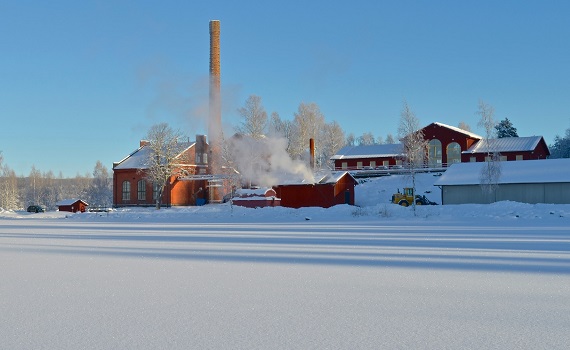“Also, more and more women enjoy whisky in Sweden today and surprisingly often their way into whisky was through a peated scotch. We have around 30 whisky shows in Sweden each year and the number of female attendees is steadily growing. One thing, though, is still a very male speciality and that is what I call the ‘nerdy side’ of drinking whisky, where you get together in clubs and have tastings, you read whatever you can find about whisky and you get together for a whisky trip to Scotland to visit distilleries.
“For whisky enthusiasts peated whisky is definitely the top priority, even though I have started to see a change also here. The fascination for peated whisky is very much a Scandinavian thing but the reason for that is a bit obscure. It could have something to do with the rugged climate or the fact that we enjoy flavourful food such as pickled herring etc. The general consumer, on the other hand, prefers smooth whiskey from Canada or Ireland or the softer side of scotch whisky,” says Ronde.
Lundén says: “What we see now is consumers wanting to know more about the products they consume, their provenance, and the history and heritage.”
So much for scotch. What about other whiskies, including locally produced ones which are increasingly coming to the fore? Nylander says: “The local monopoly tender process favours all brown spirits, especially whiskies, at the moment. However, monopoly assortment model follows consumer demand and whisky is trendy today.”
Ronde opines: “A few years ago I thought bourbon would become more popular than it is today, in line with the growing interest in bourbon in other parts of the world. The problem is that we have a very narrow selection of quality bourbon in Sweden and the importers and distributors are not very persistent in trying to promote new versions. This, of course, could also have something to do with the fact that we have a state monopoly when it comes to selling alcohol and sometimes getting a new brand on the list is like getting a camel through a needle’s eye.
SUSTAINABLE MODEL
And locally produced whiskies? “We have around a dozen producers of malt whisky in Sweden but only four of them have released whiskies that are widely available,” says Ronde. “The establishing of whisky distilleries in Sweden is a new phenomenon and most of the founders seem to be men driven by their interest in whisky.
“Having said that, a few of the companies have along the way managed to establish a sustainable business model as well with the companies being run in a very efficient way and with a goal to make money for the investors. Two of them, Mackmyra and Box, are starting to establish themselves in the export markets as well. The majority of their fans in Sweden can be found among the enthusiasts but the interest in Swedish whisky has slowly started to trickle down to the general consumer as well,” says Ronde.
Local, craft whisky has caught the eye of Diageo. Lundén says: “Locally produced whisky is experiencing a period of growth, and this is to be welcomed. Diageo has supported this growth by investing £10m in Danish distillery Stauning. It’s hoped this investment will continue to support the development of indigenous Nordic whisky.”
Nylander says: “Locally produced whiskies are growing, but from a small base. As the price point is relatively high, users are more knowledgeable whisky drinkers, with some exceptions, of course.”
Spiros Malandrakis, Euromonitor International senior industry analyst for alcoholic drinks, sums up the Nordics and whisk(e)y. He says: “There is nothing spectacular except possibly the experimental nature of consumption and them starting their own distilling. The Nordics are in line with general trends in western Europe. Bourbon is growing while blended scotch is stagnating, although in Denmark, it is up 2%-3%. Whereas single malts are up 10%-11%.




